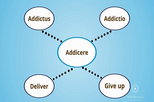Since the start of the COVID-19 pandemic, there’s been an alarming increase in drug use quantity and frequency.1 And in the past year, we’ve also seen a spike in alcohol consumption.2 Will the number of those with substance use disorders also rise as a result of these increases? What are the root causes of addiction, and how can identifying them help prevent and treat those at risk?
Common Root Causes of Addiction
It’s often difficult to trace a substance use disorder back to one specific cause since the interplay of many determinants may contribute to the overall risk. However, addiction specialists have identified these five factors as the most common root causes of addiction.
Stress and Trauma
A combination of stressful events and limited or poor coping skills can increase the risk of addiction.3 We have seen the uncertainty and worry from the global pandemic over the past year. Unfortunately, this uncertainty and worry likely caused many people to self-medicate with drugs and alcohol.
Research has shown that post-traumatic stress disorder (PTSD) correlates with an increased risk of addiction. We commonly associate PTSD with military veterans, and research does show that nearly 1 of 3 veterans who seek treatment for a substance use disorder have also been diagnosed with PTSD.4
But researchers have also pointed to trauma that begins a lot earlier as one of the root causes of addiction. Children who have experienced trauma due to abuse or neglect feel less in control of their emotions and exhibit symptoms of PTSD. As a result, these children are at increased risk for developing a substance use disorder. 5,6
Family and Environment
In a study of over 550 subjects, researchers found an association between a destructive family environment and drug addiction.7
The family units they observed lacked a structure of authority, an overall sense of warmth and love, and strong family ties. In addition to a hostile atmosphere, there was also easy access to drugs. Overall, the results showed an interrelation between family conditions and an uncontrollable desire for drugs or alcohol.7
A pathological family unit is likely one reason that peer pressure easily influences children. When children view their peers as a source of belonging and identity, the actions of the peer group can have a profound impact on its members. So, if an individual feels close ties to a friend group that abuses drugs or alcohol, there’s a greater chance of exhibiting similar behaviors. And to maintain that feeling of connection, the individual will continue to use those highly addictive substances.8
Early Use of Drugs
This risk of using drugs at an early age - due to either family trauma or peer pressure - is that the brain is still maturing throughout childhood and adolescence. Unsafe and risky decisions may result from a brain that has not fully developed, and once a young person begins using drugs, it can affect learning and decision-making.9
The existing research doesn’t present a complete picture of why early drug use is a strong predictor of addiction. Still, we have seen plenty of evidence that young people have a higher incidence of drug and alcohol dependence than older age groups.10 Research also indicates that the earlier someone begins using drugs or alcohol, the greater the chance of developing a substance use disorder.10 Furthermore, early drug use is a stronger predictor of addiction than is the duration of use.11
Genetics
The nature versus nurture question is one that many ask when trying to understand the root causes of addiction. There’s strong evidence that heritability is a factor in whether or not someone will develop a substance use disorder.12 Experts often cite twin studies when discussing genetics’ role in addiction.13
But it’s probable that other factors already mentioned (family environment and peer influences) also contribute to the development of substance use disorders, so it’s unlikely that genetic factors alone could create a high risk for addiction. More likely, specific individuals may be more vulnerable to addiction based on their genes. Consequently, environmental influences that expose these individuals to addictive substances will significantly increase the likelihood of developing a problem.
However, when vulnerable individuals are repeatedly exposed to drugs or alcohol, neurological changes based on their unique gene pattern may affect their degree of drug-seeking behavior and whether or not they develop an uncontrollable urge to keep using.14
Mental Disorders
A discussion about mental health disorders and drug addiction must include the complex question of cause and effect, which is not easy to answer. Brain circuits that control emotions, decision-making, impulse control, and rewards can be affected by addictive substances and mental disorders, as can the activation of neurotransmitters, such as dopamine, serotonin, glutamate, GABA, and norepinephrine.15
It’s thought that someone with a mental illness may be more vulnerable to the rewarding effects of drugs and alcohol because of the unique brain activity associated with the mental disorder. But drug use may also create changes in areas of the brain that are similar to those who report symptoms of a mental disorder. 15 Chronic substance use can alter the brain to lead to anxiety, depression, aggression, paranoia, and hallucinations.16
While we can’t definitively state which comes first - mental illness or addiction - we know that those addicted to drugs are about twice as likely to have either a mood or anxiety disorder.16 And a 2015 study estimated that more than 43 million adults experienced some form of mental illness. About 19% of those adults had a substance use disorder in addition to mental illness.16
Because of the interrelation between substance use disorders and mental illness, patients admitted to a drug or alcohol rehab facility are often treated for both conditions simultaneously. This treatment approach is known as dual diagnosis.
Why is it So Important to Be Aware of the Root Causes of Addiction?
Recognizing that childhood environments and events are significant risk factors for addiction allows government agencies and local communities to develop programs that help protect these populations against risks.17 Some of these programs may include:
- Interventions to ensure that the family structure is strong, can resolve conflict in a healthy manner, and help children feel safe and secure at home
- Early education support and screening for childhood physical or psychological disabilities
- Partnering between school districts and families to address academic expectations, guard against bullying, and encouraging the formation of healthy peer groups
- Providing mentors or positive adult role models when necessary
Early intervention is a preemptive and proactive approach to protect vulnerable youth who may be predisposed to use drugs and alcohol.
But understanding the root causes of addiction is also the key to helping those currently afflicted with a substance use disorder rebuild their lives once they eliminate physical dependence on drugs or alcohol. Knowing why addiction happens allows individuals to create life plans that guard against the unique triggers that led them to use drugs or alcohol as a coping mechanism.
It’s challenging to make these kinds of changes without help and expert support. Recovery IS possible, however, with the help of a drug and alcohol treatment center. It’s imperative to find a facility with addiction experts who have a great deal of experience helping people recover from various substance use disorders. These facilities often offer both inpatient and outpatient addiction treatment plans to serve the unique needs of their clients best. By learning why addiction occurred and which tools are needed to overcome it, individuals have a much greater chance of avoiding relapse and remaining substance-free.
Sources:
[1] https://www.apa.org/monitor/2021/03/substance-use-pandemic
[2] https://www.ncbi.nlm.nih.gov/pmc/articles/PMC7763183/
[3] https://www.ncbi.nlm.nih.gov/pmc/articles/PMC3658316/
[4] https://www.ptsd.va.gov/understand/related/substance_abuse_vet.asp
[5] https://www.ncbi.nlm.nih.gov/pmc/articles/PMC3587283/
[6] https://www.ncbi.nlm.nih.gov/pmc/articles/PMC3051362/
[7] https://pubmed.ncbi.nlm.nih.gov/16173210/
[9] https://www.ncbi.nlm.nih.gov/pmc/articles/PMC3399589/
[10] https://pubmed.ncbi.nlm.nih.gov/15194200/
[11] https://pubmed.ncbi.nlm.nih.gov/9543648/
[12] https://pubs.niaaa.nih.gov/publications/arh312/111-118.pdf
[13] https://pubmed.ncbi.nlm.nih.gov/10711912/
[14] https://www.ncbi.nlm.nih.gov/pmc/articles/PMC3506170/
[16] https://www.drugabuse.gov/drug-topics/health-consequences-drug-misuse/mental-health-effects
[17] https://youth.gov/youth-topics/risk-and-protective-factors








